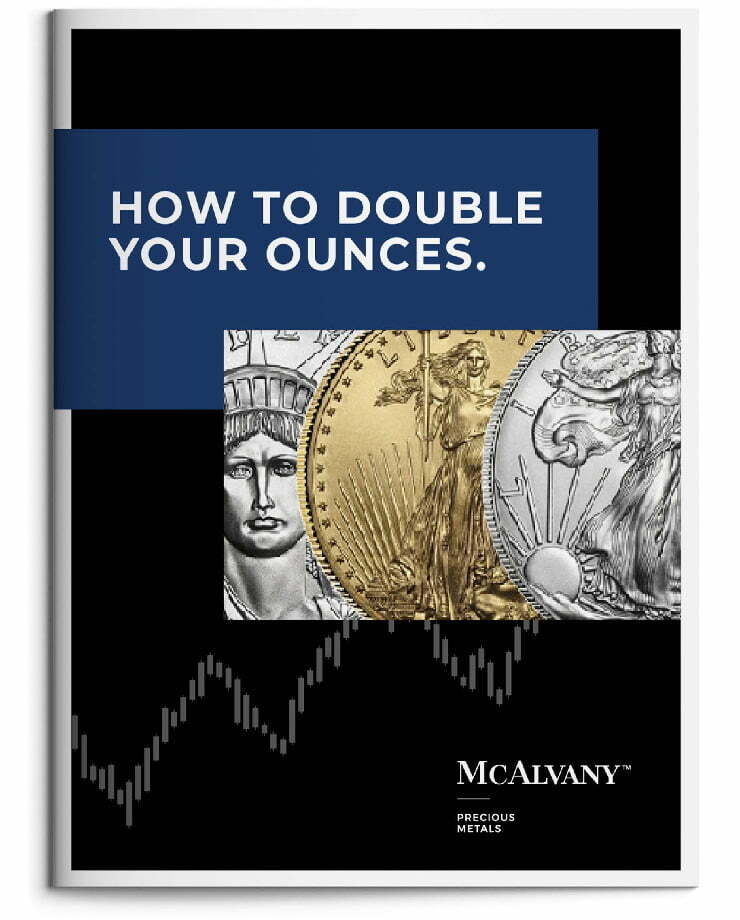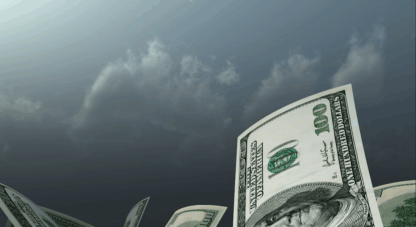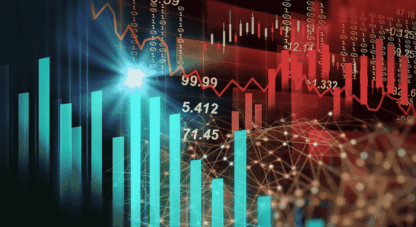While a Cobra gunship pilot in a combat aviation brigade in 1987—stationed near Frankfurt, Germany, and with logistics planning responsibility for wartime support of the 3rd Armored Division near the infamous Fulda Gap—this author made a trip to East Berlin.
With his eight-months pregnant wife in tow, he drove through Checkpoint Alpha into East Germany, across the stunning but uncultivated countryside, and through Checkpoint Bravo into West Berlin.
After reacquainting himself with capitalism for a day or two, he then took said beautiful blonde better half and unborn child, proceeded through legendary Checkpoint Charlie, and entered the showplace (along with Moscow) of Soviet communism. Much more could be said about the trip, but East Berlin was, on the surface, the most impressive city this author had ever seen.
The avenues were incredibly broad; the monuments beautiful, plentiful, and huge; and the architecture gorgeous and immense—made almost entirely of stone. Clearly, the communists wanted to portray cultural beauty and regime strength. They succeeded wildly.
The only problem was, it was all a lie. The broad avenues were empty. Few could afford cars. The shops were plentiful and their street-facing windows well stocked. If you entered them to look at their merchandise, there wasn’t any. Most shops were literally empty behind their show windows. If not empty, they had very limited wares. Again, this was the showplace of the empire. It was worse everywhere else.
The trip took place in July, and even at 52 degrees north latitude it was stiflingly hot. This man in uniform and wife in pregnancy-induced heat distress got in a long line for lemonade—the only liquid refreshment to be seen outside of a restaurant the entire day. There were no paper cups, only glasses—dipped quickly, a single time, on a vertical brush in a soapless tub of cold water to clean them. Nothing cleaned the outside of the glass.
When this author at long last got his lemonade, he felt something rough on the outside of the glass as he guzzled its contents. It was lipstick. When you’re that thirsty, you just switch to the other side of the glass.
This was the very tip of a very immense iceberg that was the Soviet Union. Most Americans of the time knew that communism was a catastrophically bad idea whose price was paid in oceans of blood and mountains of hardship. Most Americans now have no clue.
Today, communism is but one face of a totalitarian impulse that has many guises. It’s still communism in China, North Korea, and Cuba. In Venezuela, it’s socialism. In Russia, it’s Putin. In Iran, it’s theocratic “republicanism.” In the West, it’s the Davos/WEF/elite drive to unite the world in a socialist utopia under a “benevolent” totalitarian elite leadership. Same book, different page.
An absolutely key point here, though, is that when power mongers take control of a country, they focus on the big stuff. Big factories, big cities, big avenues, big buildings, big train stations and airports—you get the idea. Google “Unter den Linden” (a huge avenue in Berlin) and look at some of the Soviet-era pictures of it. You’ll get the idea.
But life happens in the little stuff. And central planning doesn’t—and can’t—attend to the little stuff. The little stuff is the consequence of people with freedom, time, opportunity, means, and materiel producing beauty and utility. You get teaming shops, abundant opportunities, millions of small businesses, an explosion of innovation, and much more.
People spend time with family and friends, not political parties and movements. They write and/or read books rather than watch national news or Hollywood movies. Little is life. Big is often death.
When the U.S. Constitution was drawn up, many people saw that it was a recipe for bigness. So they added ten amendments dedicated to littleness—and that’s where most American freedom and productivity resides.
Anytime you hear someone talk about the “greater good,” run, don’t walk away as fast as you can. When individuals don’t matter, the people don’t matter. The greater good is a euphemism for the good of the governing elite.
Take this analysis in context. Big can be good. When America was a functioning republic, it was a big country made up of littler states, which were made up of littler counties, still littler municipalities, still littler churches, and still littler families. Much of that organization remains, though the war against it is unrelenting.
Even further—big love is good. Big skill is good. Big character is good. But these things proceed from individuals.
If you doubt how much littleness has been lost, try to have a manufacturer or builder quote a small job for you. If they even return your call (they likely won’t answer it; just leave a message), they typically won’t give you an estimate. They almost certainly won’t do the job.
Tens of thousands of the smallest businesses that survive by nimbleness and customer focus rather than deep pockets and Ivy League connections were destroyed by the tin-eared, maniacally oppressive pandemic response. Many thousands more are destroyed every year by taxes, regulation, litigation, and inflation.
Thankfully, President Trump is targeting most of these enemies of smallness. He is interestingly unique in his identification with and sympathy for the “little man”—who of course is anything but little in importance and character. We should all pray for Trump’s success in this matter, whether we like him or not. His success will be to every productive American’s benefit.
In the meantime, MFG’s focus on precious metals is very much a part of this enrichment of the little things in life. Gold is issued by no central bank. It is given value by no faith or confidence in any federal government. It can easily be personally held. And when institutions fail, it allows people to survive. This scenario has been repeated millions of times over many millennia.
At the company, this impulse for life and personal responsibility goes deeper than business alone. The personnel of MFG are ideologically aligned with it. They still do business person-to-person or via personal phone calls with their clients. The company motto might as well be l’chaim—to life!
Key Takeaways:
- How deep are your reserves?
- Is DeepSeek the beginning of the end of the AI bubble?
- Trump, meet Triffin—oh, you know him?
- Silver—is the rocket ready for liftoff?
The McAlvany Weekly Commentary: Will DeepSeek Be Deepshock To The Market?
David and Kevin begin the program by acknowledging the turmoil created by DeepSeek’s AI announcement. American markets were deeply impacted—especially Nvidia and its suppliers. Having expressed concern for the health of this market for months, the hosts were still cautious in their comments. DeepSeek’s claims remain to be fully vetted, and if communists were Pinocchios, the Chinese would no longer be able to look down small noses at occidental schnozzes. In English: the Chicoms lie when it suits them, and this development suits them—so we’ll see. But the entire incident triple underlines in red a theme David has been emphasizing for years—you need to be adequately reserved (have adequate safe monetary reserves) in such hazardous times as those in which we live. Exhibits A-E are 1929, 1987, 2000, 2008, and…well…Monday. It’s not an antiquated exhortation. The hosts also look at the relative smallness of the monetary insurance (gold) market and its even smaller size for investors in the wake of pell-mell central bank buying up of gold in recent years. Those who wish to be standing with something of value in their hands when the Everything Bubble bursts had best not dilly-dally. The hosts also discuss the risk/reward ratio inherent in the stock market now, the malleability of models, and the fact that leveraged buyouts being renamed private equity doesn’t change the fact that they’re leveraged (often really, really leveraged).
Credit Bubble Bulletin: Age of Uncertainty
In comments during the Tactical Short quarterly conference call last week, Doug briefly discussed the difficulties involved in analyzing investment bubbles over decades as people become heedlessly enamored of and immensely wealthy from those bubbles. It’s likely akin to saying “the Titanic is sinkable” as it sails away from the dock—to wild acclaim—on its maiden voyage. Not the way to make friends and influence people. In his weekly wrap-up this week, Doug maintains this thankless objectivity—obstinately insisting that catapulted pigs (such as equities markets in 2025) redefine neither gravity nor porcine aeronautics, and that Icarus cannot pierce the stratosphere without dire consequences. These days, Icarus appears to have undergone a name change—to Nvidia. Among other gems, Doug offers this: “It will be interesting to see if history gets this right—the direct link between loose conditions, speculative leverage, liquidity overabundance, and the AI mania.” And this: “I don’t claim to know much about AI. I have, however, analyzed my share of speculative Bubbles. The nineties tech Bubble was extraordinary, followed by phenomenal mortgage finance and housing Bubbles. China’s apartment Bubble was nothing short of mind-blowing. But nothing compares to the AI Bubble for the potential for financial excess and resource misallocation. Odds are reasonably high that Monday was the beginning of the end, reminiscent of the subprime mortgage eruption in June 2007.”
Hard Asset Insights: The Foothills of Gold’s Eventual Everest
Morgan is a master of applying theory to reality, and of using reality to test theory. Last week he introduced readers to Triffin’s dilemma, which states that the world’s reserve currency issuer initially benefits from its status, but its benefit remains fixed while costs and complications multiply, eventually becoming unsustainable. This week, Morgan drives home the point that the U.S. is at that unsustainable point, but adds some important information. There are crucial indications that the Trump administration is aware of this problem and is moving powerfully to address it. What has looked to some observers like heedlessness of the problem may in fact be purposeful and geared toward solving it. The bets are big and the risks bigger, but that’s likely to be true of any proposed or actual solution to America’s massive debt problem. Some observers will doubtless become guardedly optimistic at Morgan’s analysis, as has this writer. Regardless of whether the behemoth Trump Administration or the leviathan of problems facing it wins, Morgan offers important information for your financial safety. However you regard it, this is analysis you won’t find elsewhere, and it’s deep and pertinent. Be sure to add it to your weekly reading.
Golden Rule Radio: Markets in Motion
Miles’ weekly recap of the metals again has them generally up slightly. Gold is looking particularly good. The dollar has given up virtually all of its recent gains, however. The hosts again examine the Commitment of Traders report and show the overwhelming preponderance of institutional investment on the long side. Taking a detailed look at silver, they show how it is moving above a longer-term trend line, which is bullish for the metal. Miles and Rob then take a look at copper, which is showing a pennant formation on its chart. They explain what that means, and what kind of potential copper has in the near future. The hosts then turn to the rift between President Trump and Chair Powell of the Fed. Trump wants lower interest rates and Powell thinks the lowering process needs to be slowed a bit. Their tête-à-tête has immense ramifications both now and in the future. Miles and Rob focus on the inflationary implications of lower rates, Morgan, in HAI above, focuses on implications for the dollar and downstream effects on trade and manufacturing. These are indeed interesting times.
Photo by Axel Mauruszat via Wikimedia Commons















